|
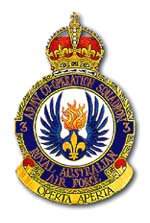
3 Squadron, Australian Flying CorpsSeptember 19, 1916 - February 28, 1919
3 Squadron was the first Australian Flying Corps squadron to move to France, and by the end of the war had flown over 10,000 operational hours in support of the ground forces in bombing, artillery spotting and reconnaissance roles. You may wish to download a 500 pixel version of the insignia
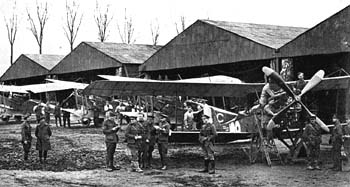
3 Squadron AFC
Nowarra, H. J. and Brown, K. S, von Richthofen and the Flying Circus You may wish to download a 500 pixel or 1000 pixel version of this image
After the outbreak of WW2 the squadron again commenced operations in Egypt, and as part of the Desert Air Force participated with great success during the North African Campaign. During the subsequent invasion of Sicily, 3 Squadron achieved the distinction of being the first Allied squadron to be based on an enemy's homeland. By the end of the war, 3 Squadron had become the highest scoring Commonwealth fighter squadron with a total of 217.5 victories in air combat. Since WW2, 3 Squadron spent an almost continuous 30 years at Butterworth in Malaysia, initially operating Sabre and then Mirage aircraft. In 1986 the squadron returned to Australia and became the first operational squadron to be equipped with the Hornet. The squadron's primary operational role is all-weather air defence, with a secondary role of surface attack.
3 Squadron was formed at Point Cook, Victoria, in September 1916 and moved to England for training before deploying to France the following year. Squadron aircraft were used for bombing and reconnaissance missions in support of British, Canadian and ANZAC forces and by the end of hostilities the unit was regarded as the best allied reconnaissance squadron of the war.
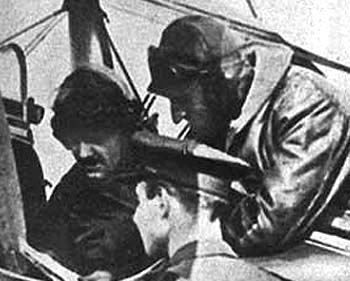
RE8 pilot, observer and a third officer Do you recognise them? Let us know http://www.geocities.com/aw3aw3/archive.htm
One of the most unusual incidents of World War I occurred on December 17, 1917 when a 3 Squadron RE8 was attacked by six Albatros scouts. After bringing down one enemy aircraft the gunner was mortally wounded by a bullet which passed through his chest before striking the pilot in the head, killing him instantly. Although damaged, the RE8 continued to fly by itself until it ran out of fuel and landed relatively intact in a snow drift some fifty miles from the scene of the combat. The Albatros bought down in this engagement was presented to Australia as a war trophy and is now on display at the Australian War Memorial, Canberra.
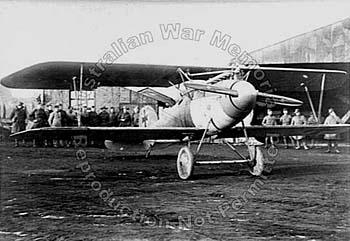 German Albatros DVa Scout A German Albatros DVa Scout aircraft Serial No. 5390/17 brought down by members of the Australian Flying Corps, near Armentieres on 17 December 1917. Both the airmen concerned, Lieutenant L. Sandy and Sergeant Gunner H. F. Hughes, were killed in the engagement and their machine flew uncontrolled for many miles before landing. Identified, Left to right: Air Mechanic Second Class (2nd AM) Maher; Sergeant (Sgt) Nicholson; 2nd AM Lickle; 1st AM Kennedy; Sgt Sevald; 2nd AM Baird; 2nd AM McDermott; 2nd AM Turnbull; Sgt Ennis; 2nd AM Worseley; 2nd AM Hurst; Lieutenant Neilson; Corporal (Cpl) Holderson; 2nd AM Knox; Cpl Field; Cpl Green; Cpl Holford; Sgt P. J. Pearce; 1st AM Lovegrove. Australian War Memorial Negative Number: E01687 You may wish to download a 500pixel version of this image
3 Squadron was involved in another unusual event on 21 April 1918 when two of its aircraft on a photographic mission were attacked by four German fighters led by Baron von Richthofen - the famous 'Red Baron'. Despite the fact that the attackers were the elite of the German Air Service, they were driven off by the lumbering Australian reconnaissance machines. Looking for easier pickings the 'Red Baron' made the mistake of descending to low level over the ANZAC Corps front line, where he was shot down and killed. The Baron's body was subsequently recovered by 3 Squadron and buried with full military honours.
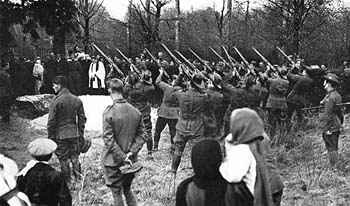
3 Squadron lays to rest an old adversary, Manfred von Richthofen
Nowarra, H. J. and Brown, K. S., von Richthofen and the Flying Circus You may wish to download a 500 pixel or 1000 pixel version of this image
Sergeant Vincent Smith The remains of his crimson red triplane was held in custody by 3 Squadron until it could be handed over to the authorities. Several components from the Red Baron's aircraft are now on display at the RAAF Museum in Victoria and a number of other artifacts, at the Australian War Memorial in Canberra.
After the commencement of World War II 3 Squadron sailed for Egypt, where despite being heavily outnumbered, provided air support to the 8th Army during the ebb and flow of the desert campaign. 3 Squadron later participated in the liberation of Italy and Yugoslavia where the Squadron was well regarded for its highly accurate attacks against enemy shipping. With a score of 217 enemy aircraft destroyed, 3 Squadron remains the highest scoring fighter squadron of the RAAF. After deploying to Malaya in 1958, 3 Squadron Sabre's and later, Mirage jet fighters operated from the Butterworth air base as part of a five power defence arrangement. Following its return to Australia in 1986, 3 Squadron received its first Hornets and with these state of the art aircraft, the Squadron continues its role as one of the nations most vital defence assets.
3 Squadron AFC 3 Squadron AFC was formed at Point Cook on September 19 1916 under the command of Major D V J Blake. It became the first Australian squadron to arrive in Europe when it arrived in England in December for further training. Equiped with RE8 aircraft the squadron moved to Savy in France in September 1917 where it's major role was that of reconnaissance, bombing and straffing. In November it moved to Baileul in Flanders where it became the reconnaissance squadron for the 1st ANZAC Corps. In this role it supported Australian troops for the remainder of the war. After the war ended the squadron provided a air mail service for the Allied armies before being disbanded in February 1919. The squadron markings for 3AFC was a white disc immediately aft of the roundal but from April 1918 onwards the only markings were individual letters.
The 'Amiens Gun'
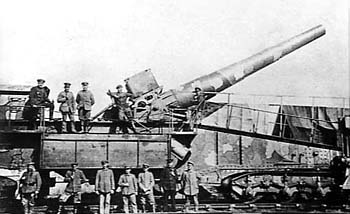 The 'Amiens Gun' with its German crew Shortly before its capture by the 5th Australian Division, Western Front, 1918 You may wish to download a 500 pixel version of this image
The capture of the Amiens Gun by Australian and British soldiers was a significant achievement. During the summer of 1918, it had been used by the Germans to fire on the city of Amiens, about 25 kilometres away, from a railway carriage. Captain John Duigan AFC (and his observer Lieutenant A. S. Patterson) were the first to spot the gun on an up till then standard photographic reconnaisance mission. Attempts were made by the Allies to destroy this powerful weapon, but to no avail. During the August 8 advance, the train was bombed by a British Sopwith Camel, causing the German soldiers on board to evacuate. Although RAF aircraft and British cavalry were the first to engage the gun, it was then quickly claimed by the advancing Australian infantry.
"We had been sent with a quantity of Amanol to blow up the large gun, however Les Strahan one of our sappers in the party had been a driver in the Western Australian railways, and he found there was still a head of steam, he asked for a fair go, instead of blowing the gun up he got the engine going, we were told then to try to get it back if possible into a cutting so it could be camouflaged."The Amiens gun barrel weighs 45 tons (40,824 kilograms) and has a calibre measurement of 28 centimetres (11.15 inches). Built in 1904 by Friedrick Krupp, it was originally a German naval gun, until it was modified to be used as a railway gun during the war. The 'Amiens gun' was later exhibited in Paris before it was sent to England for transport to Australia as a war trophy. While the gun's carriage was eventually destroyed, the barrel remains intact, and is on display outdoors at the Australian War Memorial.
Further Reading Cutlack, F.M., The Australian Flying Corps. The Official History of Australia in the War of 1914-1918, Vol. VIII.; University of Queensland Press. St. Lucia, Brisbane. Issacs, Keith, Military Aircraft of Australia 1909-1918, Hammond, David., (illus.) Australian War Memorial, Canberra, 1971 Schaedel, Charles, Men & Machines of the Australian Flying Corps. 1914-19, Dandendong, Vic. Kookaburra Technical Publications. (N.d.).
The 'Reconnaissance Experimental' RE8
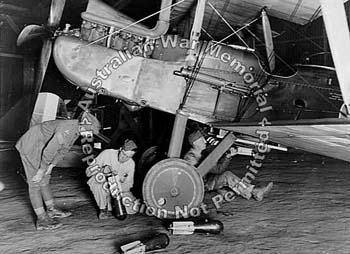
"Bombing up", RE8, 69th Australian Squadron (3 Squadron AFC) Australian War Memorial Negative No. E01176 You may wish to download a 500 pixel or 750 pixel version of this image
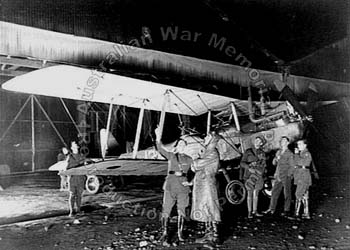
"Discussing the morning's mission", RE8 crew, 69th Australian Squadron (3 Squadron AFC) Australian War Memorial Negative No. E01177 You may wish to download a 500 pixel or 750 pixelversion of this image
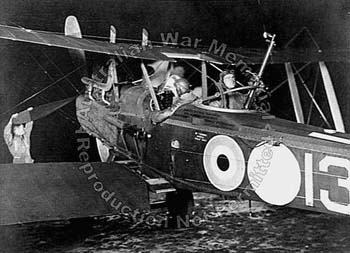
"The Dawn Patrol", RE8, 69th Australian Squadron (3 Squadron AFC) Australian War Memorial Negative No. E01178 You may wish to download a 500 pixel or 750 pixelversion of this image
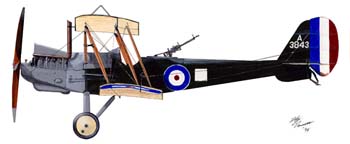
RE8 A3843 You may wish to download a 500 pixel or 1000 pixel version of this image
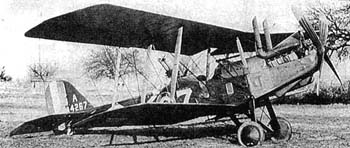
RE8 A2467 http://www.geocities.com/aw3aw3/archive.htm You may wish to download a 500 pixel or 750 pixel version of this image
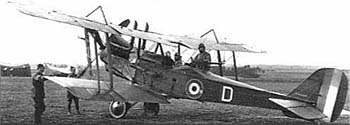
RE8, 3 Squadron AFC citation tba You may wish to download a 500 pixel version of this image
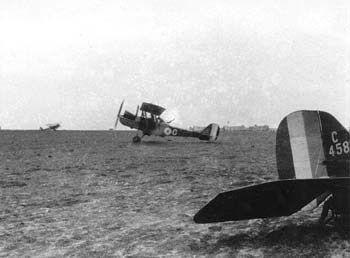
RE8's, 3 Squadron AFC http://asww1ah.topcities.com/article.htm You may wish to download a 500 pixel version of this image
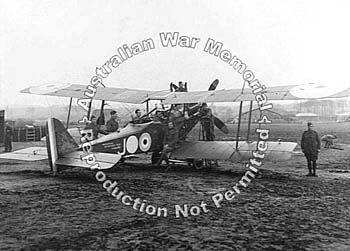
RE8, 3 Squadron AFC You may wish to download a 500 pixel or 750 pixelversion of this image
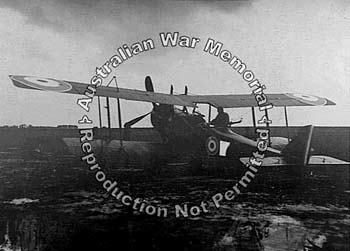
RE8, 3 Squadron AFC Australian War Memorial Negative No. E02403 You may wish to download a 500 pixel or 750 pixel version of this image
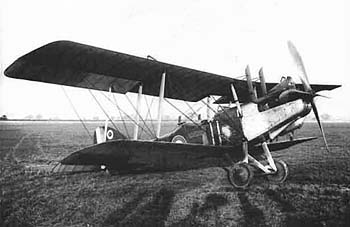
RE8 http://www.geocities.com/aw3aw3/archive.htm You may wish to download a 500 pixel or 750 pixelversion of this image
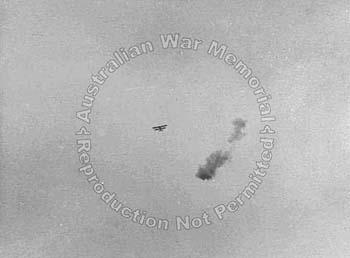
German anti aircraft shells bursting near an Australian RE8 Australian War Memorial Negative No. E02038 You may wish to download a 500 pixel or 750 pixelversion of this image
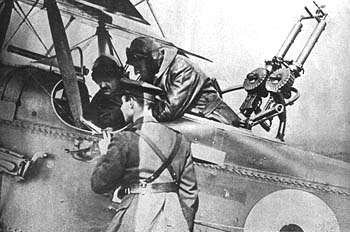
RE8, Lewis Guns (detail) http://www.geocities.com/aw3aw3/archive.htm You may wish to download a 500 pixel or 750 pixel version of this image
3 Squadron Australian Flying Corps : Killers in RE.8's The RE.8 has a shabby reputation as a fighting machine to say the least, hardly much better than that of the BE.2 series that it replaced. However an encounter with an RE.8 was by no means an easy kill for an unwary German pilot, as long as the RE was crewed by determined men. Unlike some other RE.8 squadrons, the Australians of 3 Sqn AFC did not appear to consider themselves easy victims and took offensive action in the air whenever the opportunity arose...more
Harold Edwards was born on 11 May 1896 at the mining town of Bendigo, Vic., where his father, James Raymond Edwards, had a jewellery shop in Pall Mall, the main street, opposite Roslyn Park and the statue of Queen Victoria. Harold commenced his education at the Central School, completing the sixth grade. Later he was enrolled at St Andrew's College where, amongst other subjects, he very reluctantly studied French. A few years later, serving with the AFC in France, he wished he had put more effort into it...more
Royal Aircraft Factory RE7 Reconnaissance/BomberDuxford Imperial War Museum http://www.iwm.org.uk/duxford/brit2.htm
Over the Front
Further Reading - General
Anzacs
Australian Flying Corps 1914 - 1919
Australians at war
Australian War Medals
Australian War Memorial
Bob Pearson's Aircraft Profiles
Cross and Cockade
Flying Machines Press
Jim Alley's Computer Generated Aircraft Drawings
Great War
Over the Front
Rosebud's Aviation Image Archive
Trenches on the Web
World War 1 - Information Resource Centre
|
© Copyright 1999 CTIE - All Rights Reserved - Caution |